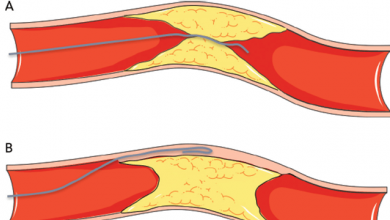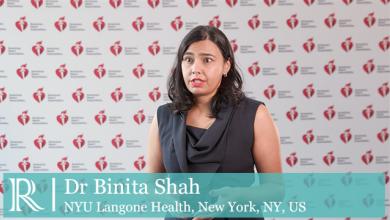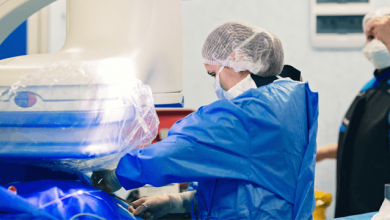Search results
PROMOTED
Author(s):
Nicolas M Van Mieghem
,
Kendra J Grubb
,
David Hildick-Smith
,
et al
Start date:
Mar 26, 2024
Author(s):
Lucy Blows
,
Simon Redwood
Added:
3 years ago
Transforming a critically narrowed coronary vessel to one that is angiographically smooth and unobstructed is immensely satisfying. However, if the procedure is examined in its component parts, it is surprising that this technique is considered safe with minimal overt clinical complications. Temporary vessel occlusion renders the downstream myocardium ischaemic, while vessel trauma initiates…
View more
Author(s):
Lucy Blows
,
Simon Redwood
Added:
3 years ago
Transforming a critically narrowed coronary vessel to one that is angiographically smooth and unobstructed is immensely satisfying. However, if the procedure is examined in its component parts, it is surprising that this technique is considered safe with minimal overt clinical complications. Temporary vessel occlusion renders the downstream myocardium ischaemic, while vessel trauma initiates…
View more
Author(s):
Yves Louvard
,
Marie-Claude Morice
,
Thomas Hovasse
,
et al
Added:
3 years ago
Due to anatomical reasons and the distributive function of the coronary tree, bifurcation sites are prone to the development of atherosclerotic lesions as a result of flow turbulence generating pro-atherogenous low wall shear stress (WSS). Over the past few years, coronary bifurcation lesions have been the subject of intense therapeutic discussions fuelled by new definitions, classifications …
View more
PCI for Chronic Total Occlusion
Author(s):
Giovanni Maria Vescovo
,
Carlo Zivelonghi
,
Benjamin Scott
,
et al
Added:
3 years ago
Article
Author(s):
Angela Hoye
,
Scot Garg
Added:
3 years ago
Coronary artery bifurcations are at an increased risk of the development of coronary atherosclerosis because of turbulent flow and low shear stress. Bifurcation lesions account for between 8% and 22% of all percutaneous coronary interventions (PCI) and have long posed a problem for interventional cardiologists.
Published data show bifurcation lesions treated using bare metal stents (BMS) have…
View more
Author(s):
Binita Shah
Added:
4 years ago
Dr Binita Shah (NYU Langone Health, New York, NY, US) discusses Colchicine in Percutaneous Coronary Intervention (PCI).
Questions:
1.What is colchicine and why study it in PCI?
2.What was the study design, patient population and primary and secondary outcomes?
3.What were your outcomes?
4.How do these compare to those in the COLCOT study?
5.How should your study be interpreted in clinical…
View more
Author(s):
Luca Longobardo
,
Alessio Mattesini
,
Serafina Valente
,
et al
Added:
3 years ago
Coronary artery bifurcation lesions are treated in 15–20% of percutaneous coronary intervention (PCI) procedures and are still plagued by worse outcomes.1 This is in spite of recent significant advancements in stent technology in general and in bifurcation stenting techniques in particular. Conventional angiography provides only limited information about bifurcation anatomy, plaque distribution…
View more
Author(s):
Alda Huqi
,
Giacinta Guarini
,
Doralisa Morrone
,
et al
Added:
3 years ago
Myocardial revascularisation in patients with stable chronic angina is performed with the aim of reducing cardiovascular death, reducing myocardial infarction (MI) and relieving angina symptoms. However, contrary to expectations, modern therapy with percutaneous coronary intervention (PCI) has not had a significant impact on hard outcomes.1–5 Indeed, as also summarised in a recently published…
View more
Author(s):
Ahmed M Alabbady
,
Ahmed S Abdul-Al
,
Kimberly A Skelding
Added:
3 years ago
The introduction of percutaneous coronary angioplasty in 1977 by Dr Andreas Grüntzig1 was one of the most remarkable achievements in the cardiology realm, opening the door to numerous advancements in percutaneous coronary interventions (PCIs). Due to advances in PCI techniques over the past four decades, catheters along with four generations of coronary stents have dramatically changed the…
View more











